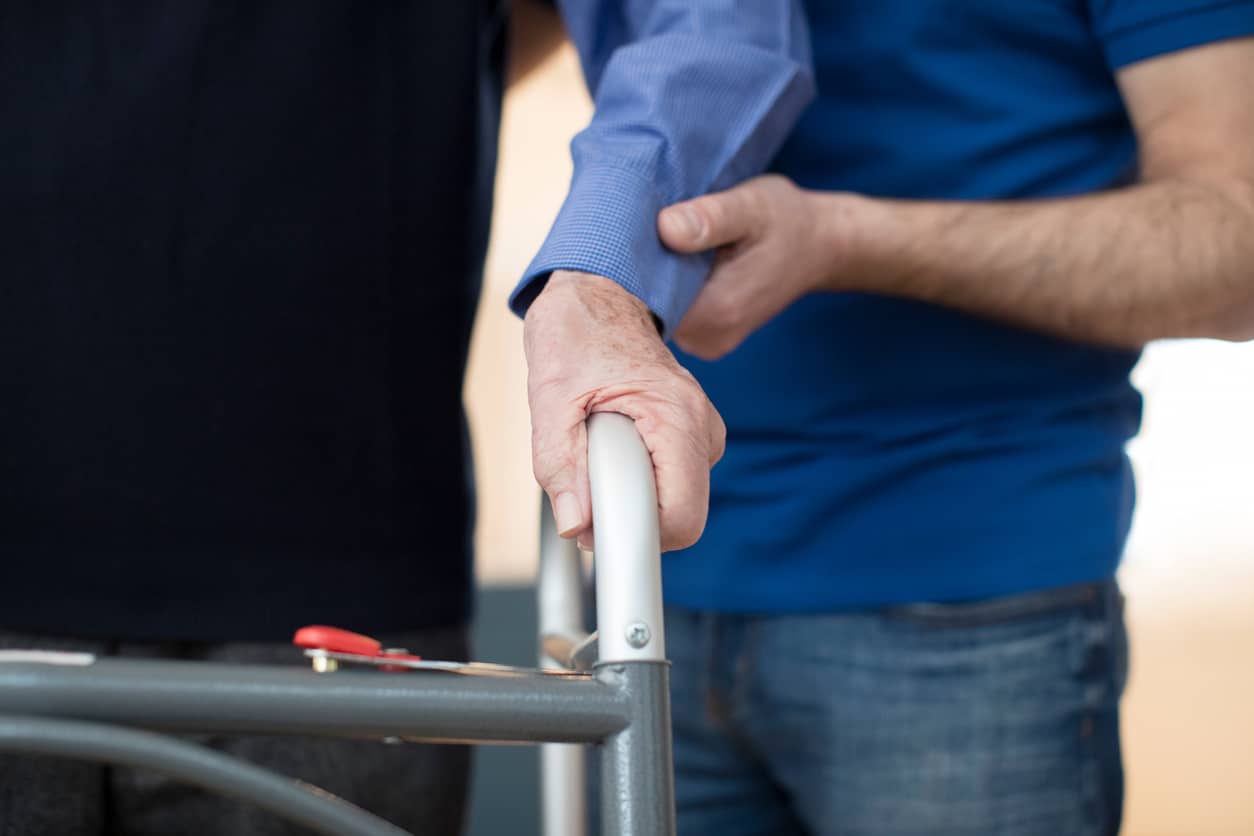Occupational therapy has the potential to help people with disabilities and mobility limitations change their lives for the better. The professionals in this field help clients do things they want to do or need to do, including ADLs (Activities of Daily Life). These activities can enhance accessibility and teach skills that increase quality of everyday living.
True, there are incredible mobility aids and equipment that can help others with issues of accessibility while also improving quality of life, but how do many learn to use them? Occupational therapy is key in helping people gain skills and the ability to do what they want and need to do. Occupational therapy utilizes tools to help clients complete ADLs (Activities of Daily Life) and to safely live life to the fullest.
Occupational Therapy Interventions
Occupational therapy interventions vary based on the client’s needs and limitations, but some common interventions include helping to integrate children with physical disabilities into social situations, such as school. Occupational therapists may also work with those recovering from an injury or that may need to re-learn a skillset. The Occupational therapist typically performs a consultation and customizes their treatment plan to the patient, taking the patient’s goals into consideration. Interventions are then personalized to help the patient meet these goals. OT focuses on health from a holistic point of view, so the practitioners may consider various environmental factors when customizing their treatment plan and subsequent interventions.
Occupational Therapy Candidates
So, who would need OT? Typically, the patient would receive a consult with an Occupational therapist following a specific diagnosis. These diagnoses usually involve some sort of physical limitation that occupational therapy interventions can improve or aid. Some candidates for occupational therapy include:
- Individuals who have experienced a stroke
- Anyone with partial or permanent paralysis
- Individuals with vision impairment
- Diabetics
- People recovering from joint replacement surgery
- People with poor balance, such as vertigo
- Individuals with chronic pain issues
- Dementia patients, including Alzheimer’s disease
- Patients diagnosed with Cerebral Palsy
- Cancer patients
- Individuals with brain injuries
- Burn patients
- Those with mental health issues
- People with behavioral problems, and more!
Anyone who struggles with ADLs or everyday tasks may benefit from occupational therapy. Talk to your doctor, provider, or practitioner to learn more about a referral.
Occupational Therapy Treatment
An Occupational therapist is a professional that has attended graduate school and completed clinical training in the field. So, what exactly does the therapist do? The OT’s job is to help teach their clients new ways of completed necessary, everyday tasks, like dressing, eating and talking. This might involve reorganizing the client’s living situation to be more conducive to physical disabilities or limitations or it may include demonstrating how mobility aids and equipment are safely used. The therapist may help the client improve small motor coordination or speech after a medical event, like a stroke. The practitioner may provide support to the family when it is a child that is experiencing issues, such as behavioral problems or developmental delays. These individuals are referred by physicians widely, and also are found in assisted-living situations and rehabs providing therapeutic interventions.
OT Treatment Duration
Wondering how long OT is going to take? That is, what will be the duration of your occupational therapy interventions and treatment. That depends. For instance, if you are having OT that includes speech therapy, treatment could last a week to years. Any OT treatment that is less than 100 days in duration is considered short-term rehab, in medical terminology. Most targeted, OT treatments are short-term provisions that consistently monitor, measure, and assess progress to determine what comes next. Longer OT treatment plans may come into play for those with chronic or debilitating conditions, such as Parkinson’s Disease or Diabetes and related nerve damage.
Occupational Therapy Month
Occupational Therapy Month in April provides a chance to find out whether the benefits of treatment are right for you- or someone that you love. Awareness, information, insight, and empathy are goals of this national observance. This is a time to learn more and revere those occupational therapists that are making positive changes in people’s lives every day. By paying tribute to these professionals, you are also honoring someone who relies on them for treatment, too. Think of ways to observe OT month this year!
Would you benefit from occupational therapy? How about mobility aids or devices? If so, talk to the mobility professionals at Pacific Mobility to learn more. The team at Pacific Mobility has generations of experience with finding the right equipment for you, the client. Call for a no-obligation assessment to determine if mobility aids are a practical approach to improving your accessibility and autonomy. If you struggle with access, we want to help. Call today to learn more.
President, Husband, Father, Grandfather Graduate of UC Davis- Bio Sci Major- Go Aggies! Jeff has extensive experience in all of Pacific Mobility’s products and services, and specializes in accessibility products as well as stairlifts, ceiling lifts and custom wheel chairs. His hobbies include spending time with family, gardening, mountain biking, exercising and off road motorcycle riding.
24 years as Owner/President of Pacific Mobility Center – selling, installing, and servicing stairlifts, porch lifts, ceiling lifts, pool lifts, handicap ramping, specialty wheelchairs, scooters, power wheel chairs, and other power mobility devices
Certified Environmental Access Consultant since 2008
Licensed General Contractor since 1998
Certified Aging in Place Specialist since 2016
Board Member for Home Access Professionals
Member of Association of Members of the Accessibility Equipment Industry (AEMA)




